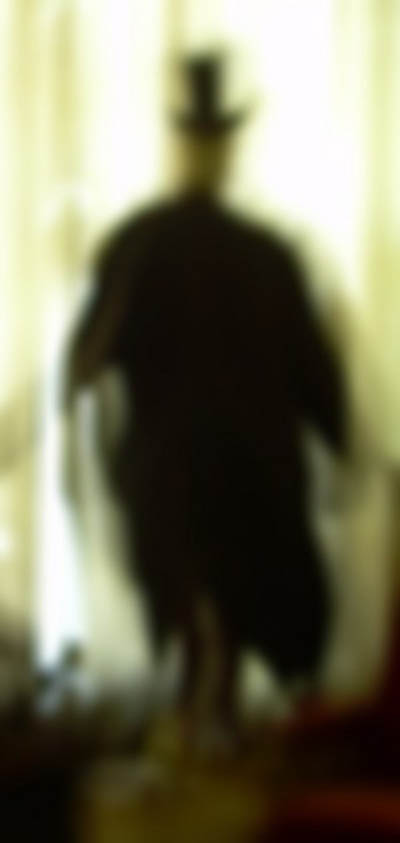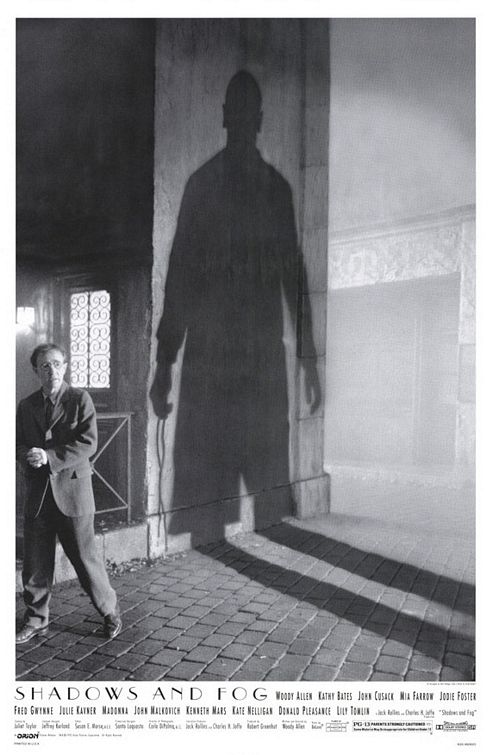"The Master and Margarita (Russian: Ма́стер и Маргари́та) is a novel by Mikhail Bulgakov, woven around the premise of a visit by the Devil to the fervently atheistic Soviet Union. Many critics consider the book to be one of the greatest novels of the 20th century, as well as one of the foremost Soviet satires, directed against a suffocatingly bureaucratic social order.
The novel alternates among three settings. The first is 1930s Moscow, which is visited by Satan in the guise of "Professor" Woland or Voland (Воланд), who arrives with a retinue that includes valet Koroviev (Fagotto) (Фагот, the name means "bassoon" in Russian and some other languages), a mischievous black cat Behemoth (Бегемот, a subversive Puss in Boots, the name referring at once to the Biblical monster and the Russian word for Hippopotamus), the fanged hitman Azazello (Азазелло, hinting of Azazel), the pale-faced Abadonna (Абадонна, a reference to Abaddon) with a death-inflicting stare, and the witch Hella (Гелла). The havoc wreaked by this group targets the literary elite, along with its trade union, MASSOLIT (a Soviet-style abbreviation for "Moscow Association of Writers", Московская ассоциация литераторов, but possibly interpretable as "Literature for the Masses"; one translation of the book also mentions that this could be a play on words in Russian, which could be translated into English as something like "LOTSALIT"), its privileged HQ Griboyedov's House, corrupt social-climbers and their women (wives and mistresses alike) – bureaucrats and profiteers – and, more generally, skeptical unbelievers in the human spirit.
"The opening sequence of the book presents a direct confrontation between the unbelieving head of the literary bureaucracy, Berlioz (Берлиоз), and an urbane foreign gentleman who defends belief and reveals his prophetic powers (Woland). Berlioz brushes the prophecy of his death off, only to have it come true just pages later in the novel. This fulfillment of a death prophecy is witnessed by a young and enthusiastically modern poet, Ivan Ponyrev, who writes his poems under the alias Bezdomniy (Иван Бездомный – the name means "Homeless"). His futile attempt to chase and capture the "gang" and warn of their evil and mysterious nature lands Ivan in a lunatic asylum. Here we are introduced to The Master, an embittered author, the petty-minded rejection of whose historical novel about Pontius Pilate and Christ has led him to such despair that he burns his manuscript and turns his back on the "real" world, including his devoted lover, Margarita (Маргарита). Major episodes in the first part of the novel include Satan's magic show at the Variety Theatre, satirizing the vanity, greed and gullibility of the new rich; and the capture and occupation of Berlioz's apartment by Woland and his retinue.
"Part 2 introduces Margarita, the Master's mistress, who refuses to despair of her lover or his work. She is invited to the Devil's Walpurgis Night midnight ball, then made an offer by Satan (Woland), and accepts it, becoming a witch with supernatural powers. This coincides with the night of Good Friday, linking all three elements of the book together, since the Master's novel also deals with this same spring full moon when Christ's fate is sealed by Pontius Pilate and he is crucified in Jerusalem.
"The second setting is the Jerusalem of Pontius Pilate, described by Woland talking to Berlioz and echoed in the pages of the Master's rejected novel, which concerns Pontius Pilate's meeting with Yeshua Ha-Nozri (Иешуа га-Ноцри, Jesus the Nazarene), his recognition of an affinity with and spiritual need for him, and his reluctant but resigned and passive handing over of him to those who wanted to kill him.
"The third setting is the one to which Margarita provides a bridge. Learning to fly and control her unleashed passions (not without exacting violent retribution on the literary bureaucrats who condemned her beloved to despair), and taking her enthusiastic maid Natasha with her, she enters naked into the world of the night, flies over the deep forests and rivers of Mother Russia; bathes, and, cleansed, returns to Moscow as the anointed hostess for Satan's great Spring Ball. Standing by his side, she welcomes the dark celebrities of human history as they pour up from the opened maw of Hell.
"She survives this ordeal without breaking, and for her pains and her integrity she is rewarded; Satan offers to grant Margarita her deepest wish. She selflessly chooses to liberate a woman she has met from her torment, instead of asking for anything for herself. The woman had suffocated her child by stuffing a handkerchief in its mouth, and now she must wake up every morning to find the same handkerchief lying on her nightstand. This characterizes Margarita very nicely—though we fully expect her to ask to be reunited with the Master, something we crave to happen, she instead asks for someone she has just met to be liberated from their eternal torment. Satan, as it was apparently of Margarita's and not of his own power that the wish was completed, offers her another wish after the first. For her second wish, she chooses to liberate the Master and live in poverty and love with him. However, neither Woland nor Yeshua thinks this is a kind of life for good people, and the couple leaves Moscow with the Devil, as its cupolas and windows burn in the setting sun of Easter Saturday. The Master and Margarita leave and as a reward for not having lost their faith they are granted "peace" but are denied "light" -- that is, they will spend eternity together in a shadowy yet pleasant region similar to Dante's depiction of Limbo, having not earned the glories of Heaven, but not deserving the punishments of Hell."
After reading the story I think the strongest visual element was the idea of shadows, and how Satan and his retinue were suspicious and unknown; shadows emphasise this.
I think this is probably a very typical assumption - of course shadows are mysterious!
Nowadays the Russians use, in general, the word иностранец(inostranyets) to indicate a foreigner, but in earlier days the word немец(nemets) was used. And this word has a double meaning, because it stood for foreigner, but also for German. So when Ivan asks Woland in the first chapter: "Вы немец?", it can be translated as "are you German?" but also as "are you a foreigner?" Немец (nemets) is derived from the verb неметь(nemet), which means strike dumb.So a nemets is a dumb person, someone who doesn't speak Russian.
"Никогда не разговаривайте с неизвестными" - "Never talk to strangers"... is the title of the first chapter. Strangers arouse in the Soviet Union both curiosity as suspicion. Because they represent the glamour of abroad, as well as the risk for espionage.
Shadows are used often in cinema to achieve a feel of mystery or terror etc. Probably the most famous cinematic shadow is 1929's Nosferatu - gives me chills!
I think the idea of shadows also incorporates the idea of what can be seen out of the corner of your eye. The book is not a horror story, it essentially sets out to highlight people's greed etc. But after Woland 'performed' his tricks the people didn't know what was happening when they lost their skirts and money turned into bottle labels - this would strike fear of going mad. He certainly messed with people's mind and several characters including Ivan who we meet at the beginning, ends up in an asylum!
Therefore tricks of the eye, mind, things you see out of the corner of your eye could all be ideas to consider.




No comments:
Post a Comment